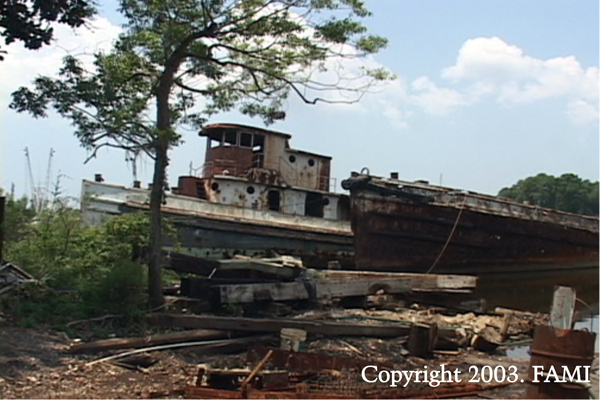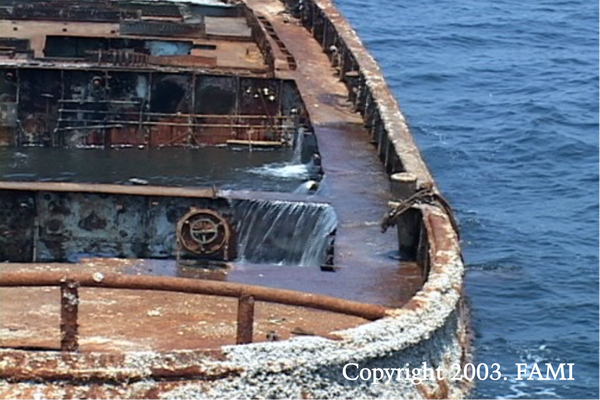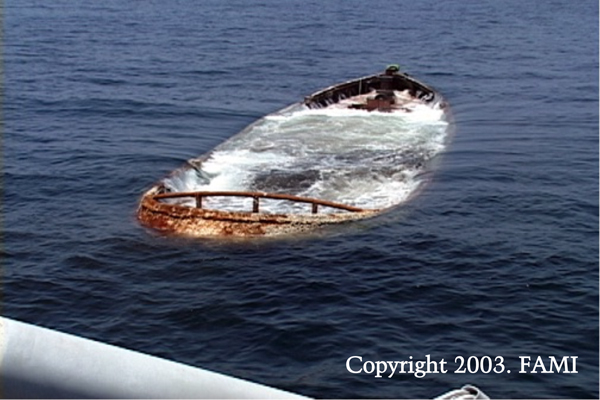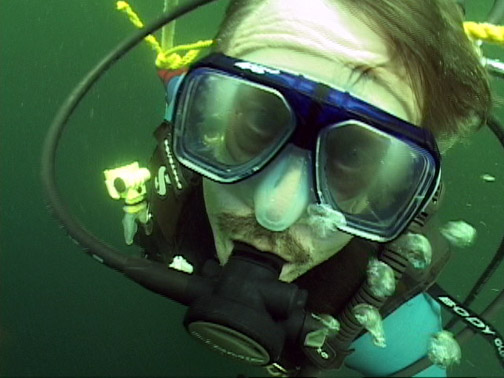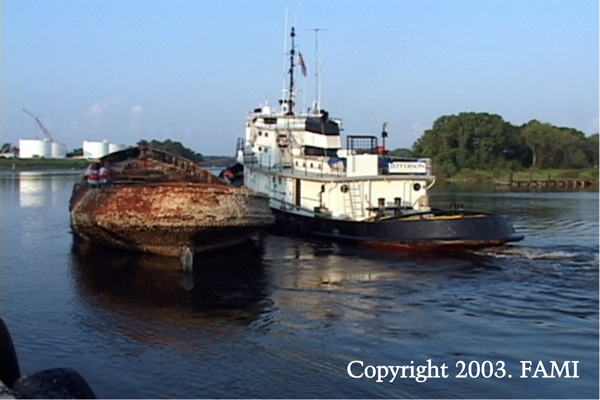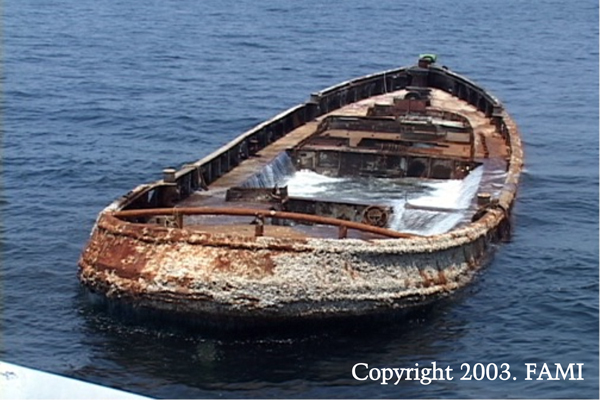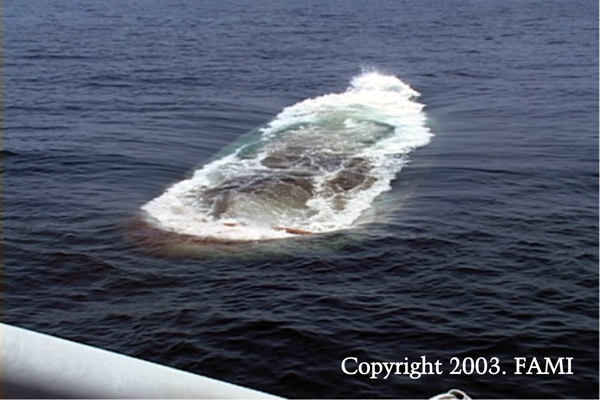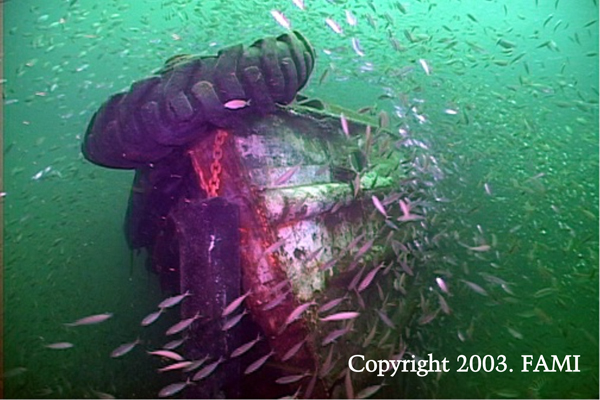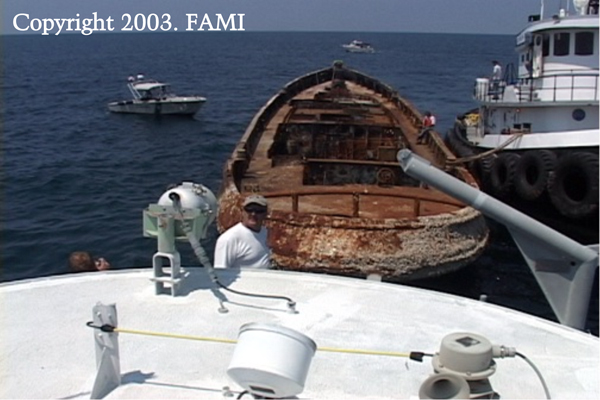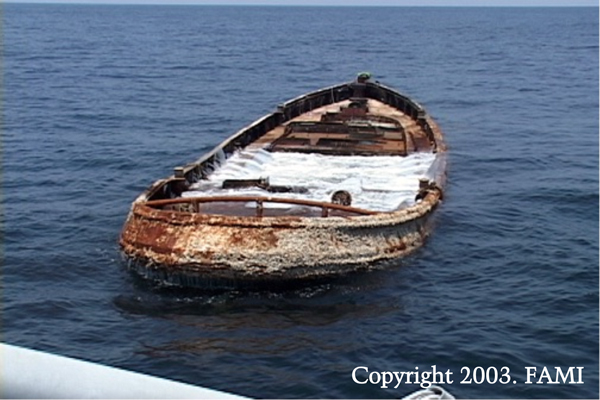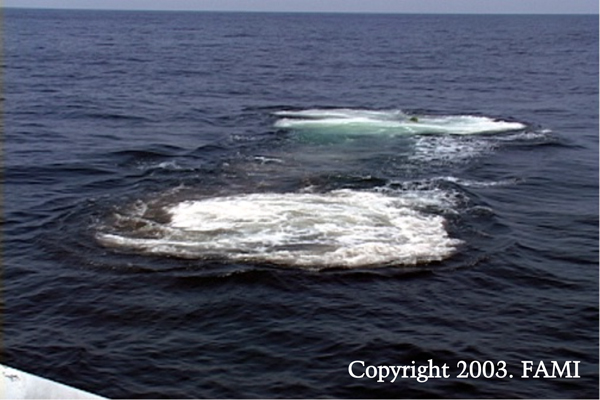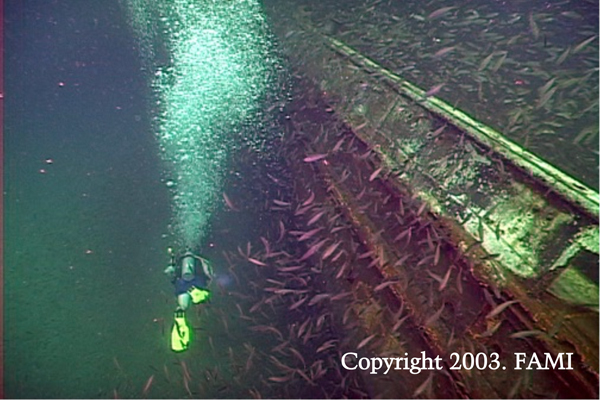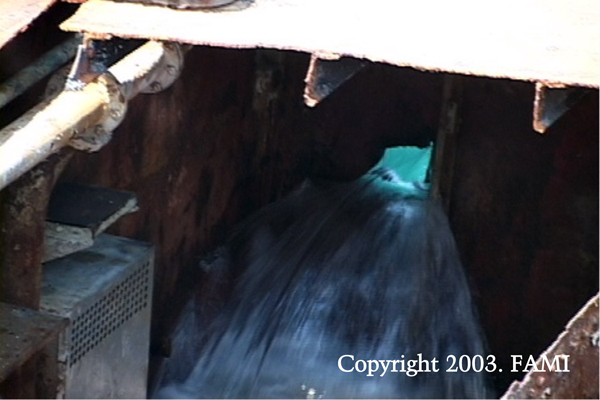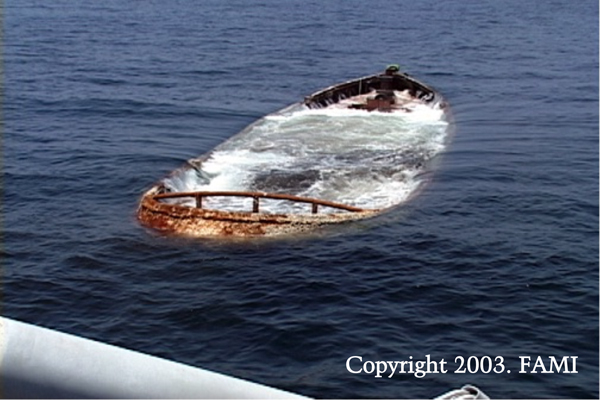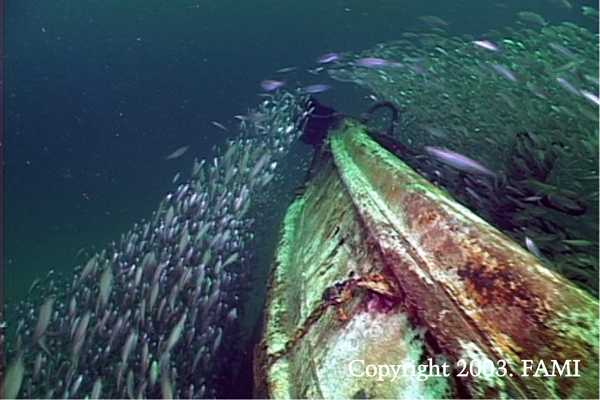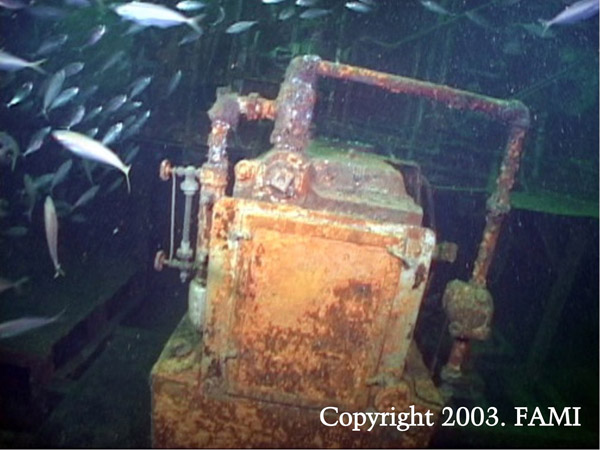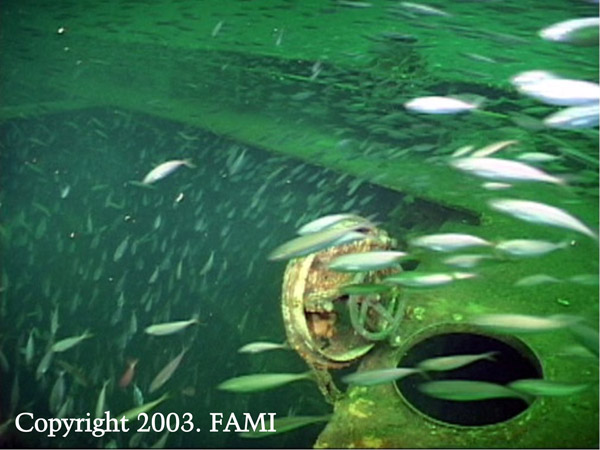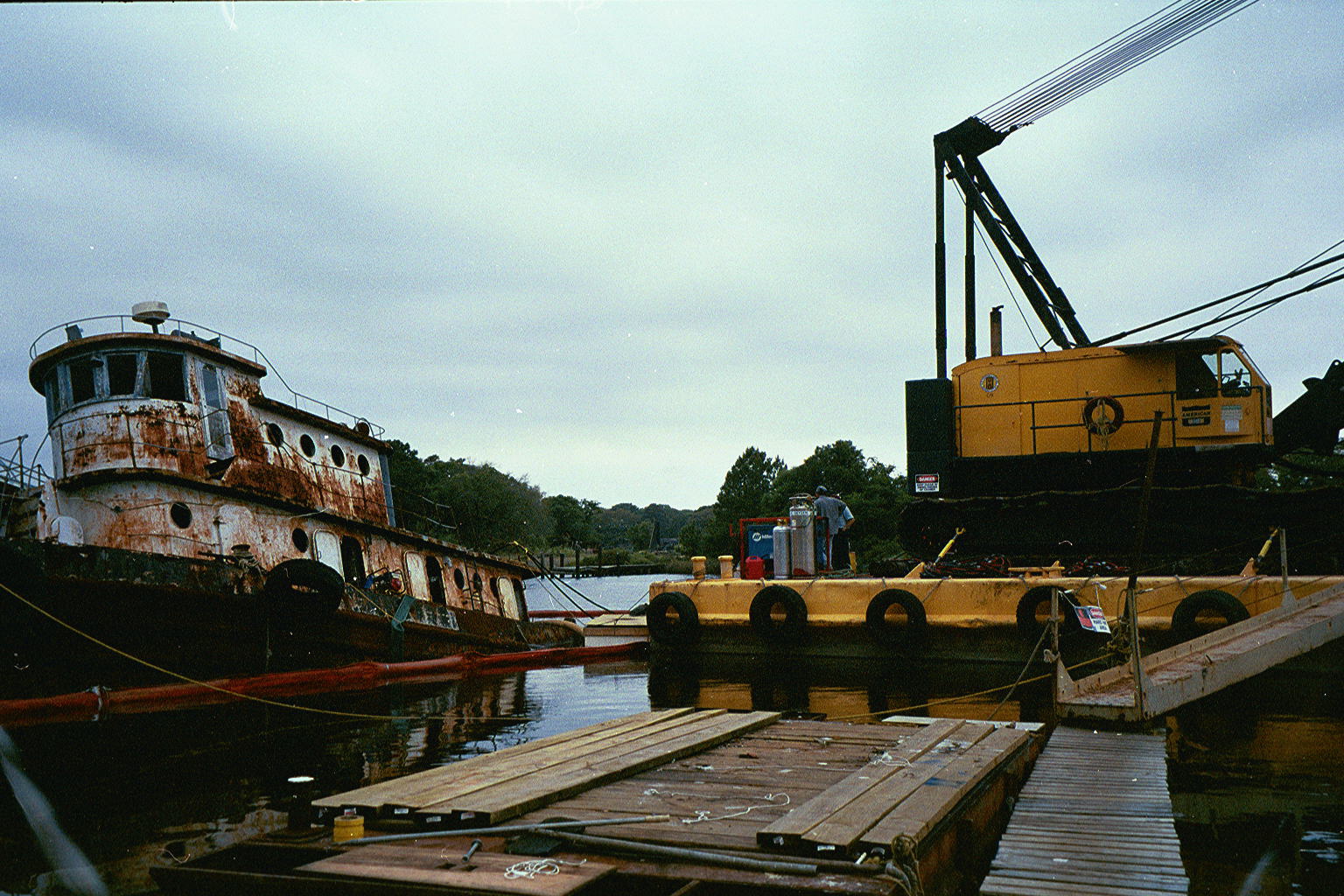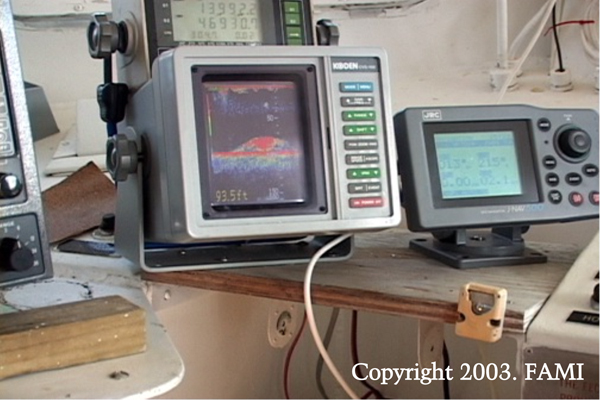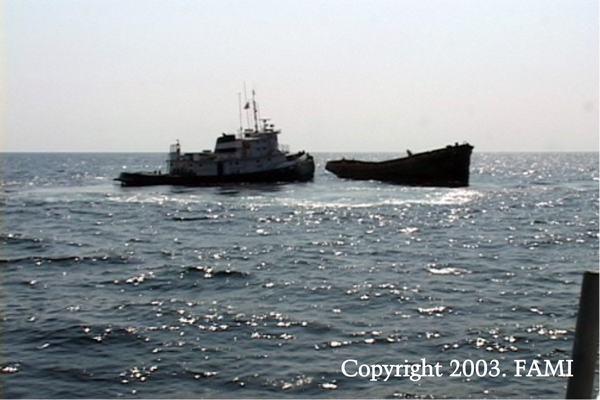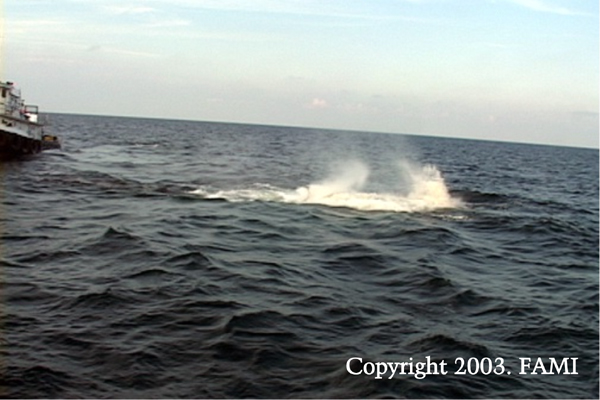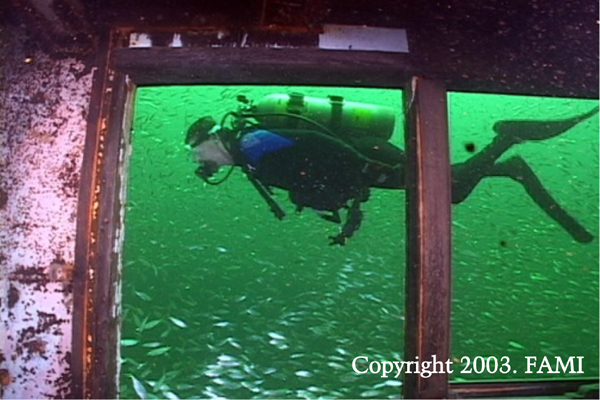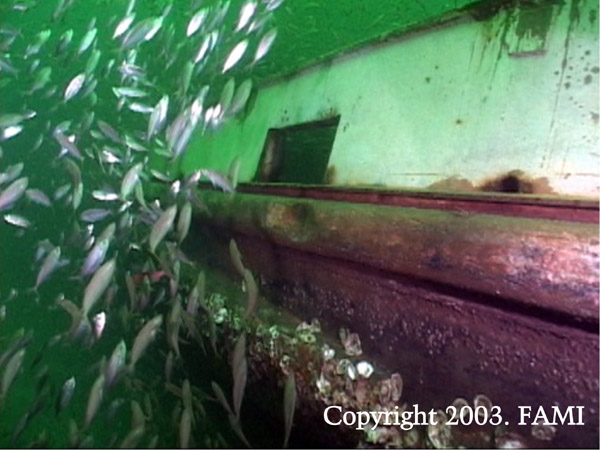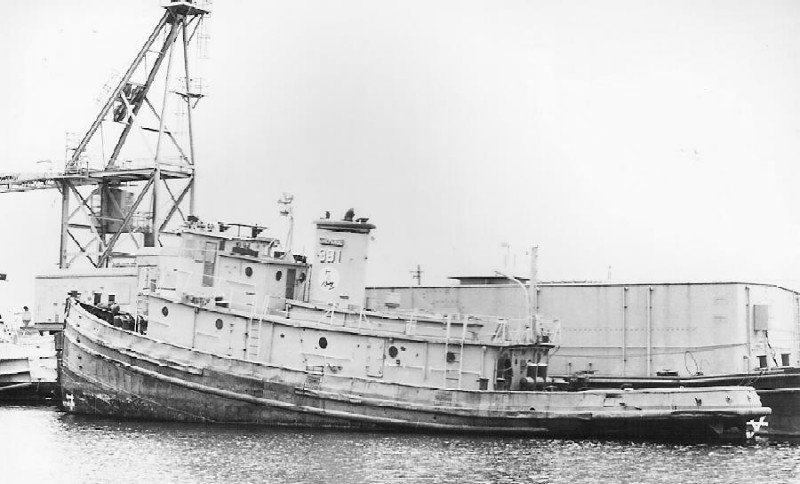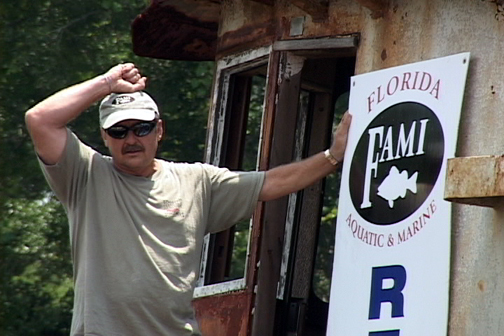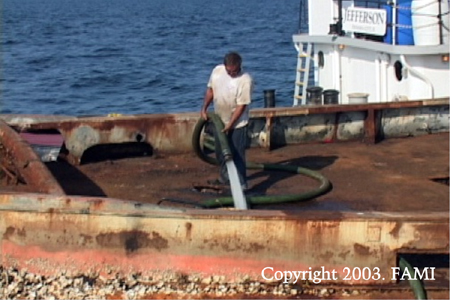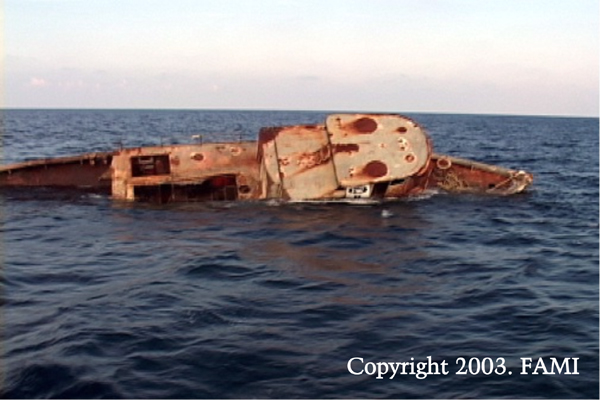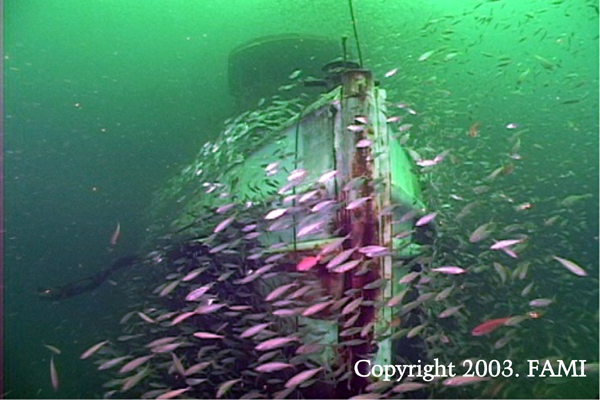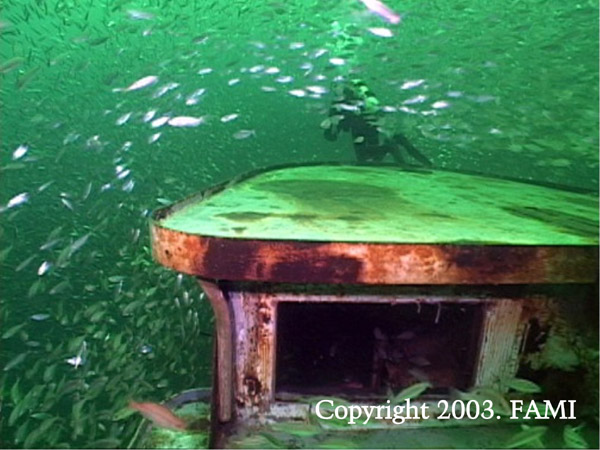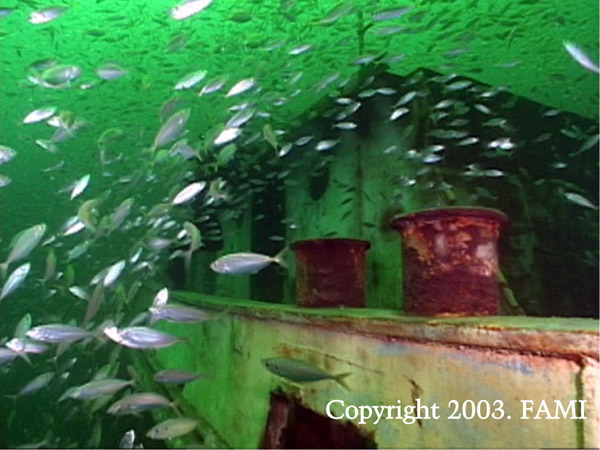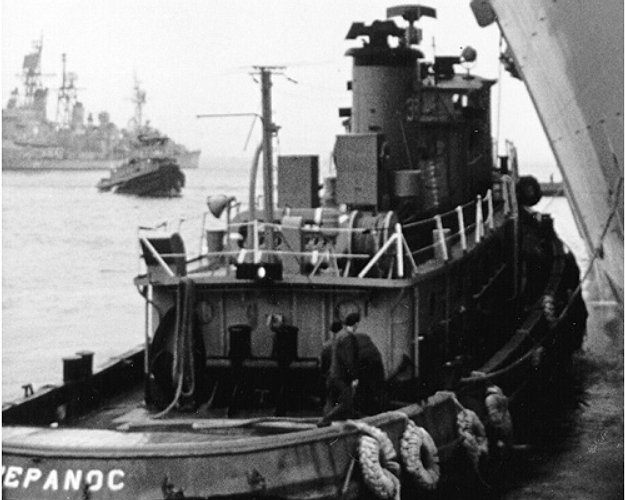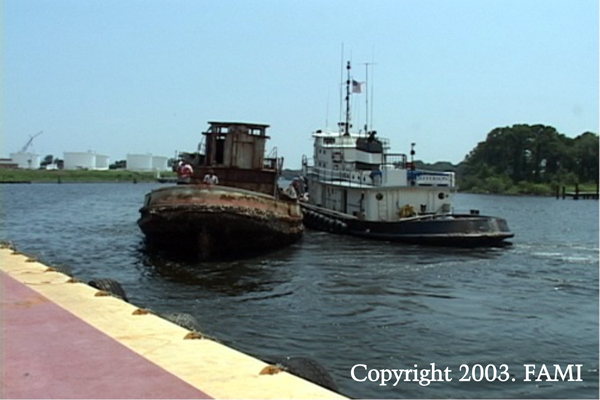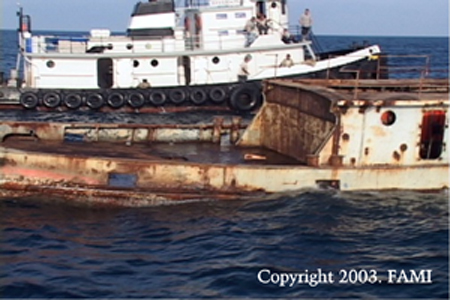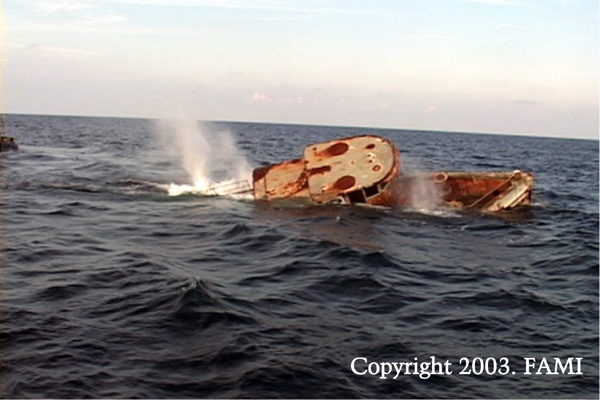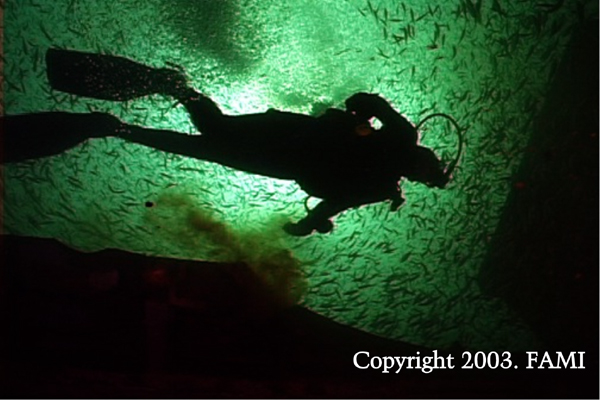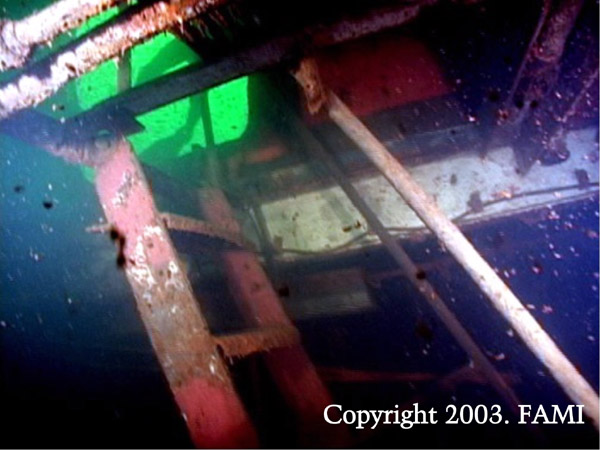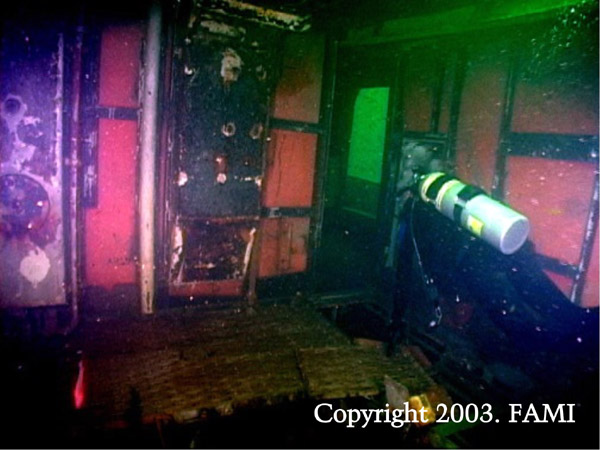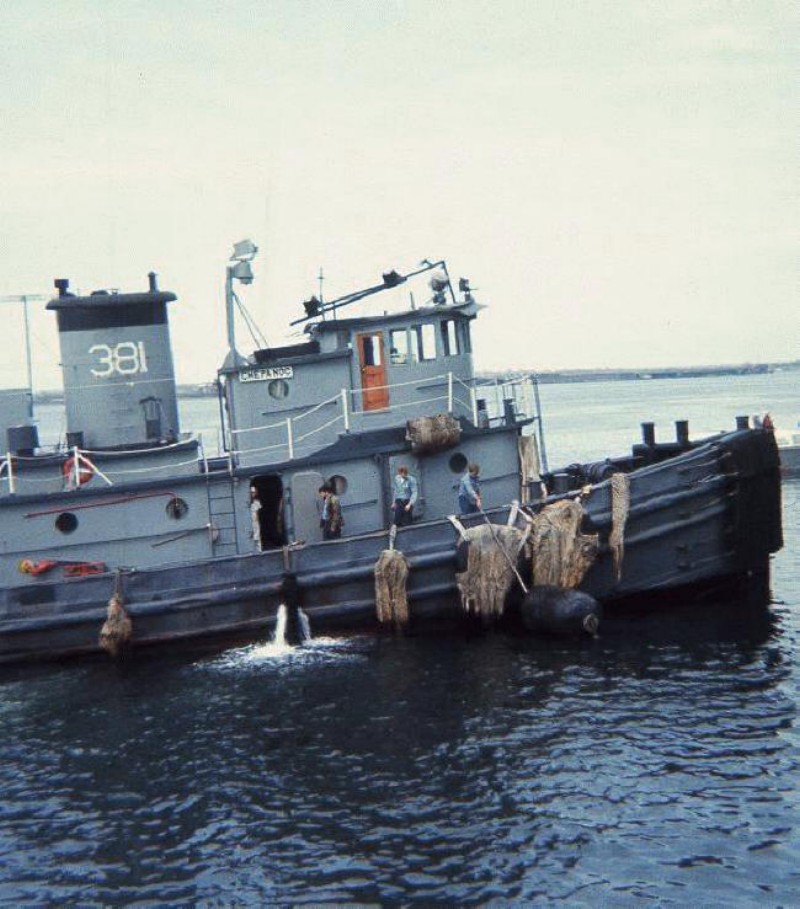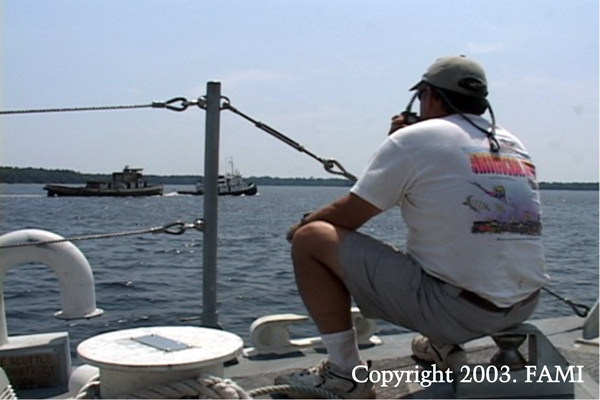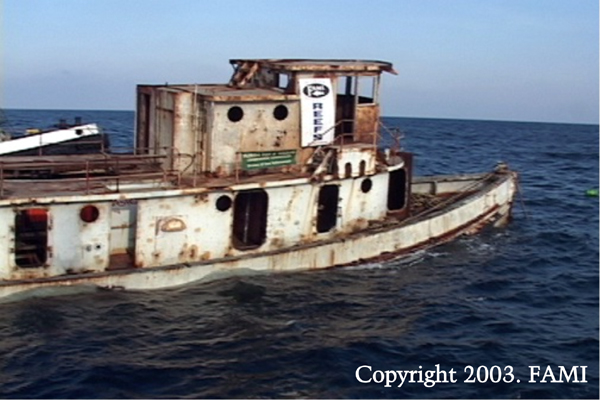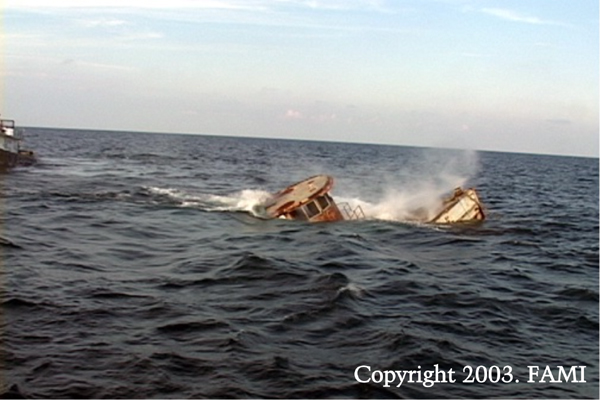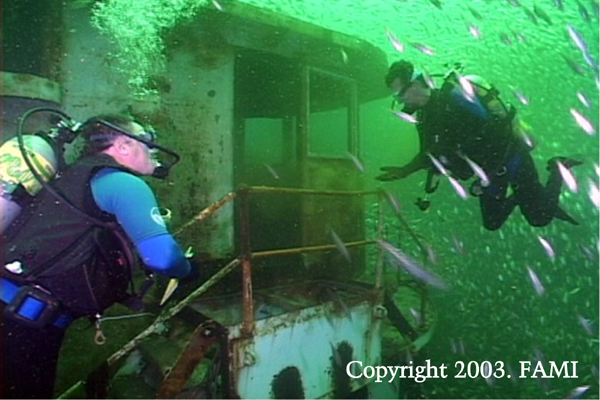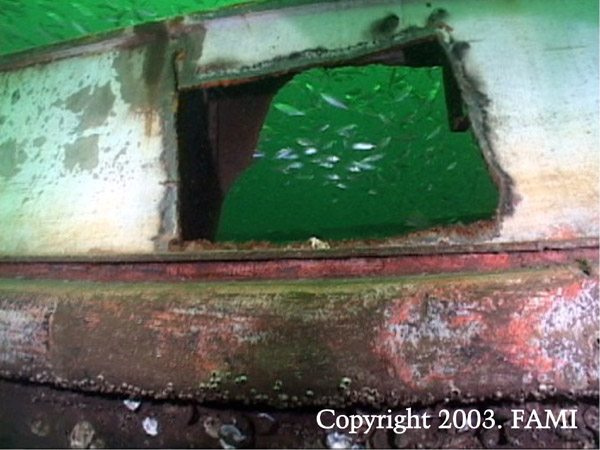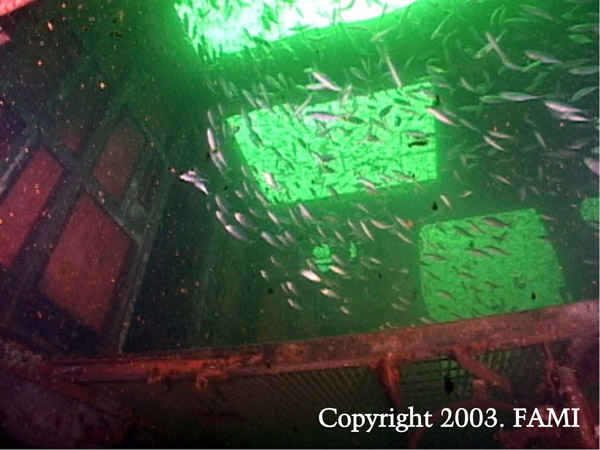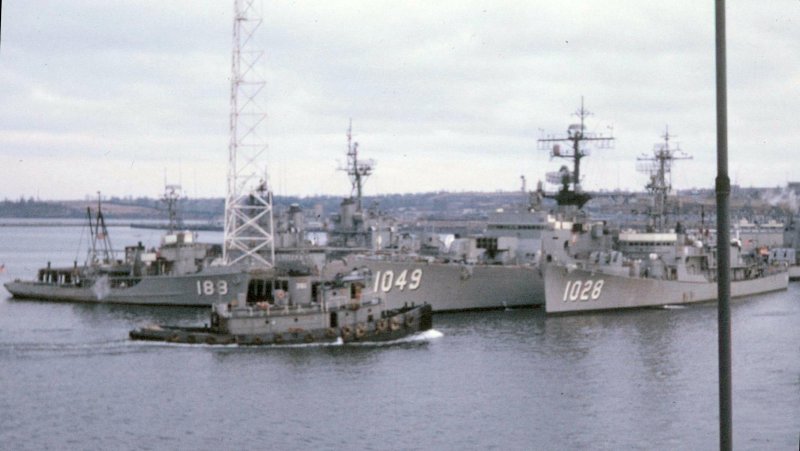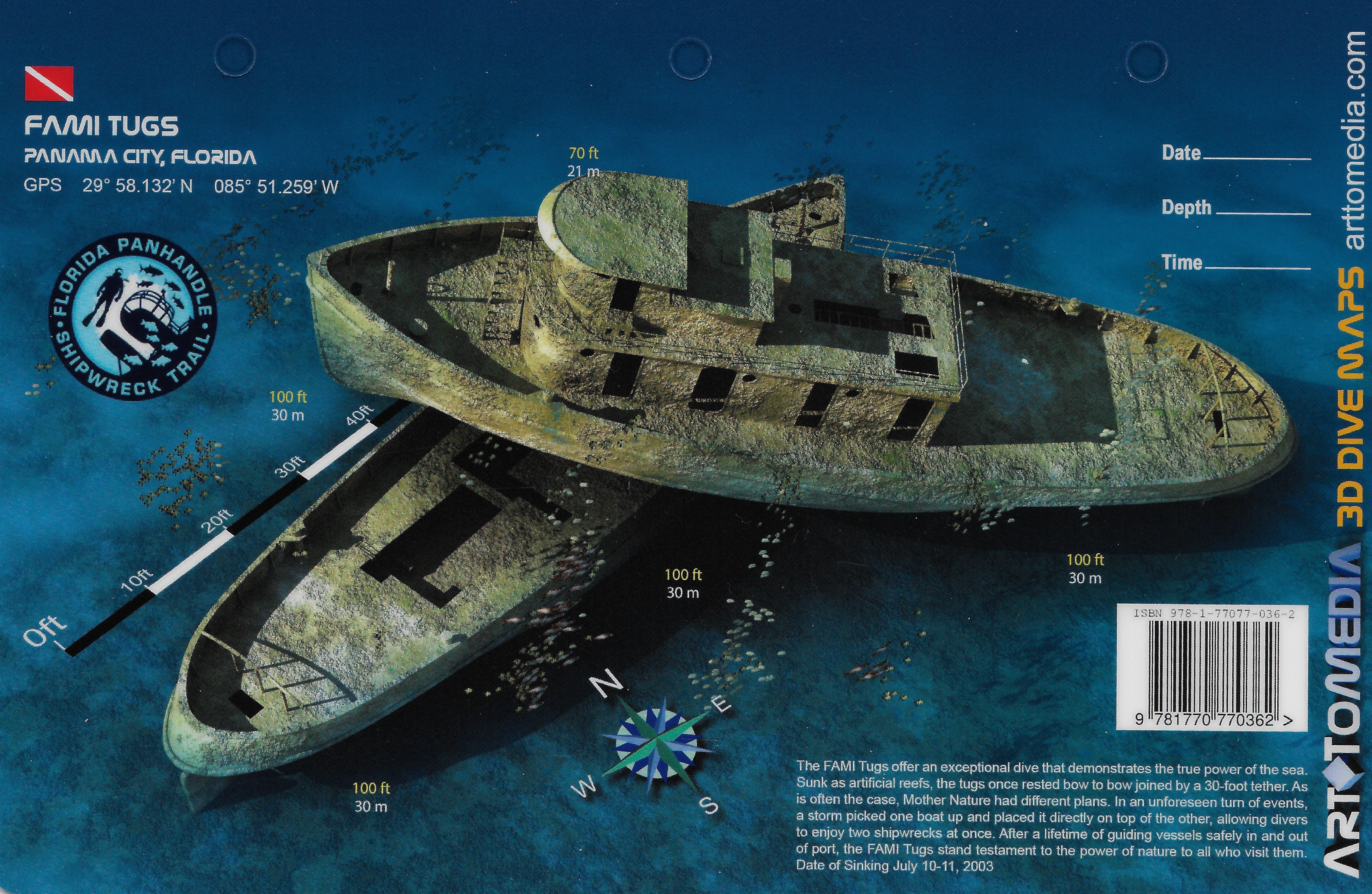Dive The FAMI Tugs
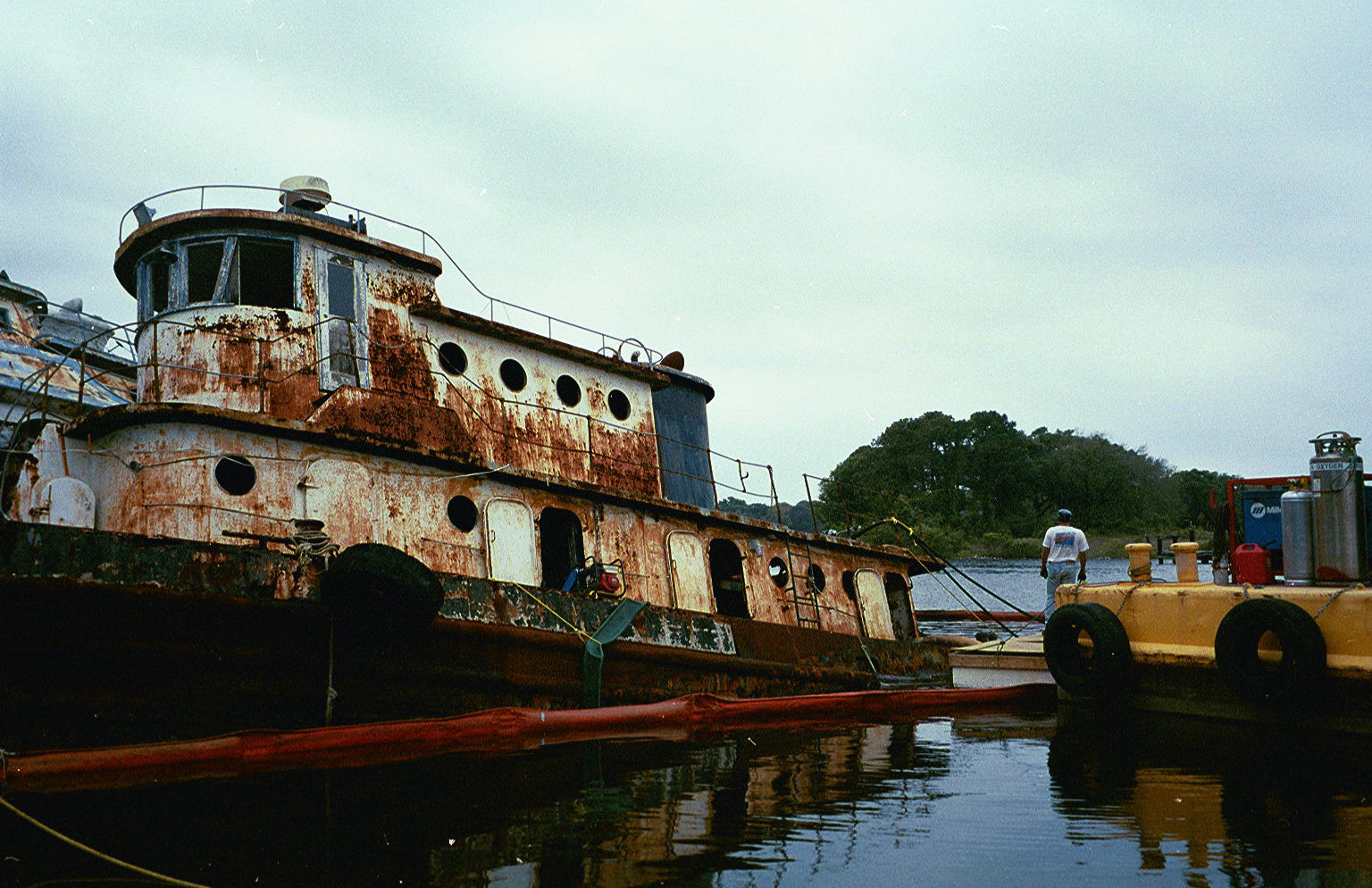
The FAMI Tugs Dive Video
The FAMI Tugs History
Once, the tugs rested bow to bow joined by a 30-foot tether. As is often the case, Mother Nature had different plans.
The Job of The FAMI Tugs
After a lifetime of guiding vessels safely in and out of port, the FAMI Tugs stand testament to the power of nature to all who visit them.
The Sinking of The FAMI Tugs
In an unforeseen turn of events, a storm picked one boat up and placed it directly on top of the other.
Second Life of The FAMI Tugs
Sunk as artificial reefs, it allows divers to enjoy two shipwrecks at once. The FAMI Tugs offer an exceptional dive that demonstrates the true power of the sea.
Date of Sinking: July 10, 2003
Depth
Length
Beam
Distance
FAMI Tugs Coordinates:
29° 58.132’ N – 085° 51.259’ W
Early History Of The FAMI Tugs
Thanks to a contract executed by Florida’s Fish & Wildlife Conservation Commission the Panama City area has an exciting new artificial reef site. Resolve Marine Group, a Ft. Lauderdale Salvage company came to Bay County during the month of June ’03 to remove four derelict tugboats that had been abandoned by defunct corporations in a local bayou.
Their first mission was to secure the site and make sure no further environmental damage was done. One of the vessels had been sunk for over five years, one was listing hard to starboard and was wedged against a third and the fourth was hard aground. With large cranes and other heavy equipment, the guys most famous for helping roll the SPIEGEL GROVE off Key Largo, went quickly to work.
The sunken tug became the first target. The experienced crew made short work of tug number one and it was soon on the way to a scrapyard in Mobile. The work progressed to taking off the super structure of tug # 2 and Frank Leckey, Site Supervisor, with Resolve Marine began to pursue reefing avenues. “Whenever possible we always choose reefing over scrapping,” he said. Meetings with Florida DEP, FWCC Law Enforcement and the contract manager for the Derelict Vessel program met with Bay County officials and Danny Grizzard with Florida Aquatic & Marine. The result of that meeting kept everyone on track and working toward the goal of making a new artificial reef.
Over the next few days the process of clean and inspect was repeated several times. On Thursday, July 10, 2009, the first part of the new reef was deployed. The “hull only” tug was taken out and settled perfectly on the bottom, upright, in 100 feet of water. The top of the bow was at 80 feet. The hull settled underwater perfectly level (see photo by Hal Lacey).
Friday afternoon, after a few minor complications (patches took care of the leaks) the second phase of the new site was transported. This addition was intact with superstructure (less engines, transmissions & pollutants) in place. During the 4 hour transport, FAMI volunteer divers secured an anchor line to the tug already in place. Initial plans were to place the tug’s bow to bow. As usual, Mother Nature weighed in with her vote and the wind shift and sea conditions arranged for the second tug to be pointing at an angle to the first drop. After settling to the bottom the dive survey team found the second tug at a slight angle and 30 feet from the first one. EXCELLENT new site. Now on top of each other.
Commercial dive boats delivered customers to the site beginning the next day. This was a rare opportunity for visiting divers to see a new artificial reef from the beginning. In just two days the FAMI Tugs were covered with schools of baitfish. Of course, this brought in the Spanish and King Mackerel. The second survey dive was done one week later and triggerfish, small snapper, amberjack and lone barracuda had already moved to this hot, new location. Feedback from local divers as well as the visitors indicates that this will be a very popular dive site. Pack your gear, get to Panama City and check this out so you will be able to come back next year and find out why artificial reefs are so important to coastal communities.

